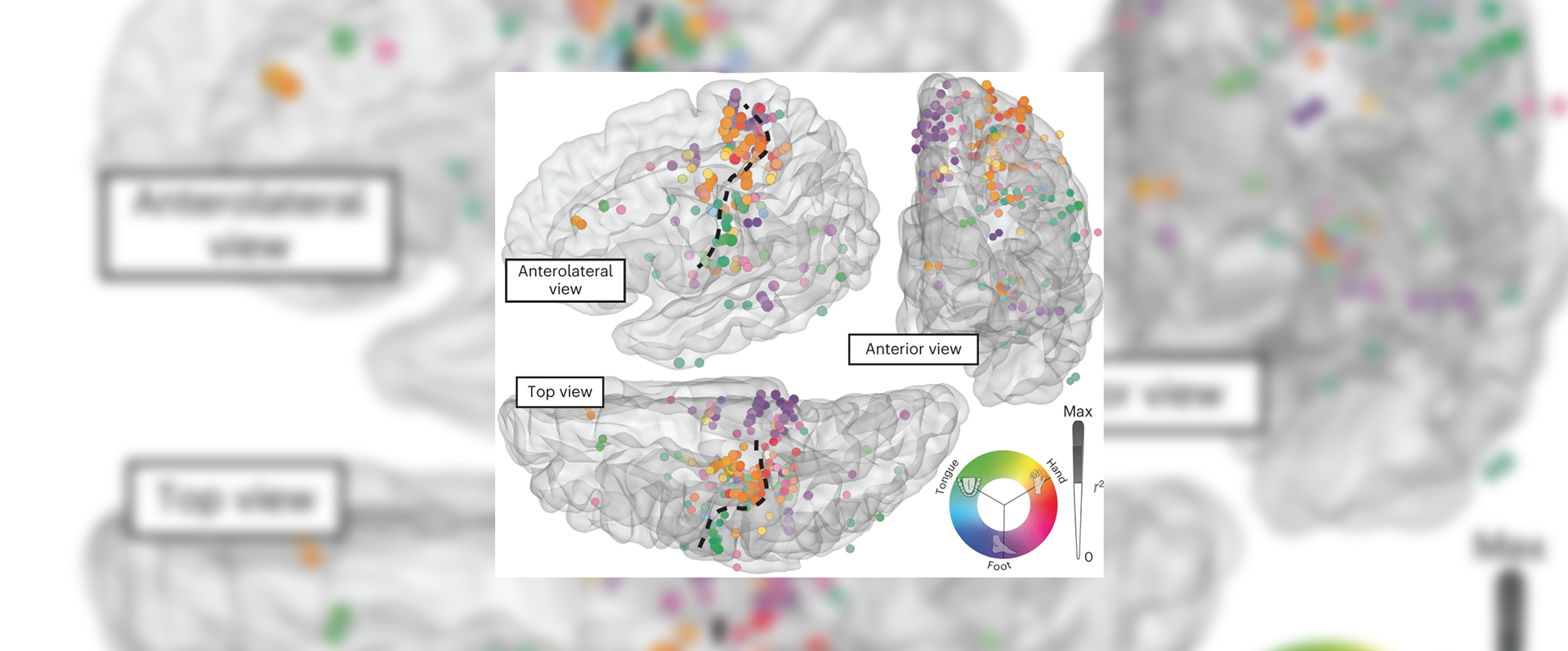A specific part of the brain called the precentral gyrus is responsible for sending signals to the body’s muscles to make them move. Ever since the seminal work of Wilder Penfield close to 100 years ago, we have known that different areas of the precentral gyrus correspond to different parts of the body, like a map, in such a way that the left hemisphere of the brain is responsible for movements on the right side and vice versa.
What researchers at the Tianqiao and Chrissy Chen Frontier Lab for Neurotechnology have now discovered, in collaboration with scientists and clinicians at the Mayo Clinic, is that when we move, the brain’s electrical responses spread out in three dimensions throughout the precentral gyrus, expanding the map-like organization. This expansion was unexpected and suggests that the brain is more complex in coordinating movement than previously thought. Moreover, they discovered that the map-like structure within the precentral gyrus is interrupted by a previously unknown area that they called the Rolandic motor association (RMA) area and that is located in the depths of a specific groove in the brain called the central sulcus. Interestingly, the RMA is active not only during movement of a specific body part, but when we move any body part on either side of our body. Thus, it seems that this RMA area plays a role in coordinating complex behaviors, although more research is needed to fully understand its function.
